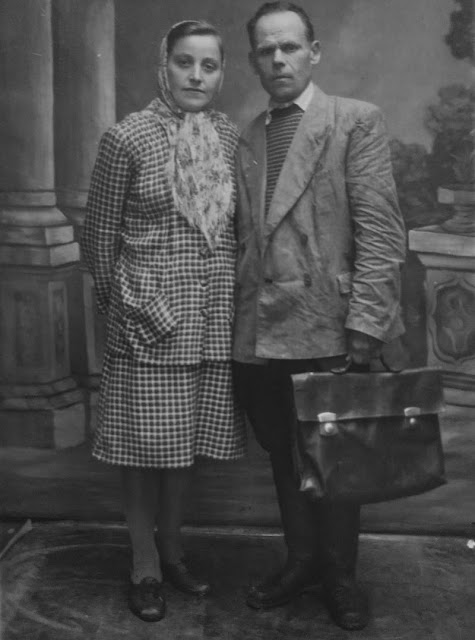Monika Limane. The first professional Latgalian female ceramist
Historically, ceramicists were mainly men. Latgale was no exception. All the famous masters of Latgalian ceramics were men. However, there was a less-known but no less talented Latgalian female ceramicist from the Silajāņi area — Monika Limane.
She was born on June 8, 1924, in the family of a tailor and housewife. Her father Jāzeps was a World War I veteran who settled back in his native Babri village after the war. Limane was the eldest child in the family. Despite being a skilled tailor herself, she did not follow in the footsteps of her father. It was five years after World War II ended when Limane explored the ceramicist craft.
She married Alfons Limans in 1949, and he was the primary reason, why Limane found herself in ceramics. He was from the Limani village in the Silajāņi area, known for its skillful ceramicists. Most of the villagers were familiar with this craft, and Alfons was no exception.
 |
| Latgalian ceramist Monika Limane with her husband - Alfons. |
However, a few years after the marriage, encouraged by her husband, she gave it a try and soon explored her talent as a ceramicist. Eventually, this led her to become the first professional and recognized Latgalian female ceramicist.
Until the ’50s, all the well-known Latgalian ceramics masters were men, and ceramics itself — was purely a men’s craft. The reason for that was simple — to produce a large number of wares month after month was hard physical labor. Also, the process of preparing glaze that included the melting of lead was harmful to health.
Not every man could cope with it, imagine the strain such hard work would put on a woman, who also had to take care of the household and two young sons. You need to keep in mind that families in that period lived in strong patriarchy that had no place for any complaints.
Limane took the challenge of this craft, and day after day, created ceramic wares on her potter’s wheel, gradually improving her skill. She also had help in the face of her husband, Alfons. He was taking care of various aspects in the production process of ceramics — getting the lead & oxides that was a very tricky task back in the Soviet period.
He also was doing his part in the process of placing wares in the kiln. When the firing process was done, Alfons loaded the horse cart with ceramic wares and took them to the Latgalian markets for sale.
When art historian and Latgalian ceramics enthusiast Jānis Pujāts started to collect the information and wares of Latgalian ceramicists, Limane was also on his radar. Pujāts visited Limani village several times, watched how she works and bought some of her ceramic wares that later were presented in the Silajāņi ceramics exhibitions around Latvia.
Pujāts enthusiasm helped to raise the interest in Latgalian ceramics increased. In later years, Limane’s works were part of the art exhibitions in Moscow and Warsaw.
 |
| Illustration of a ceramic jug made by Monika Limane. |
Her works had their unique touch and characteristics. In comparison with other renowned Latgalian masters, Limane’s wares were way lighter in weight but still as durable as the heavier wares of other ceramicists. Such qualities made it very easy for her husband to sell ceramics in the Sunday markets for a good price.
For decorative purposes, Limane mainly used the carvings of various folk symbols. One of the unusual decorative features of her ceramics was the carvings of short folk songs and poems. All these characteristics helped her works to stand out and attract the interest of private art collectors and ethnographers. This helped to gain some extra income from the private commission works.
However, when the decline of Latgalian ceramics was approaching, and demand for the everyday use wares was decreasing, she eventually abandoned the craft that fed her family for 20 years. Her skills were good enough to convert herself into a ceramic artist, but Limane was not the kind of person, who seeks fame.
She had a humble upbringing which influenced the perspective she had on the ceramicist craft. It was a way to survive, rather than look at it as an artistic journey. The mindset was way more simple and pragmatic than nowadays.
After her ceramicist career was over, Limane continued to work and used some of the skills she explored and learned in her early years from her father. She had a talent not only for ceramics but also for sewing thick winter coats that were always in high demand due to cold winters.
The Limani village became less inhabited, and there were no active ceramicists left anymore. Monika Limane lived in the house her husband built long after his death in 1982. She died in 2010, at the age of 86, and she was buried in the Eisāgi cemetery alongside her husband and youngest son.
Comments
Post a Comment